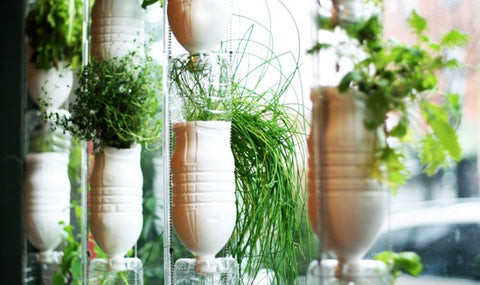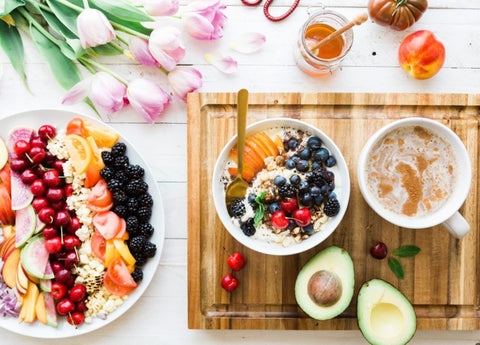Imagine transforming an otherwise empty windowsill or countertop corner into a garden that not only offers physical and mental health benefits but also becomes a source of the freshest herbs and veggies you've ever tasted.
In this blog, we’ll explore 5 tips and tricks for indoor growing, showing you how to maximize your space and yield from your small indoor garden.
Plant Selection Tips for Indoor Growing
Choosing the right plants is crucial when starting an indoor garden. While aesthetics might guide the selection of houseplants, when it comes to edible plants, other factors are important.
- Grow Plants You Enjoy Eating - Love cilantro? Great! If not, skip it. Focus on what you'll actually enjoy harvesting and eating.
- Focus on Plants Best Eaten Fresh - Some produce starts losing quality almost immediately after harvesting. For indoor gardening, prioritize these plants so you can enjoy their peak flavor. Check out our separate article for more insights.
- Opt for Plants Where a Little Goes a Long Way - Herbs like basil, dill, and parsley are perfect examples. The difference in flavor between home-grown and store-bought herbs is remarkable.
- Grow Unique Varieties - Did you know there are over 10,000 tomato varieties? You won't find most of them in stores, so take this opportunity to grow something truly special.
For more details, check out our blog titled ‘What Should I Grow Indoors?’
Cultivar Selection Tricks for Gardening Indoors
Just as not all tomatoes are the same, neither are all basil or parsley varieties. Different cultivars of the same plant can vary in their suitability for indoor growing.
Key traits to look for include:
- Dense foliage
- Compact stature
- Fast-growing habits
- Lower light tolerance
- Drought resistance (because, let’s face it, sometimes we forget to water!)
- Pest and disease resistance
When you buy seeds from a hardware store, you're likely getting a generic outdoor cultivar. For indoor gardening, it’s worth seeking out cultivars bred specifically for small spaces and indoor conditions.
At Urban Leaf, indoor and urban gardening is our specialty. To learn more about what sets our cultivars apart, you might find ‘5 Reasons Why You Should Not Buy From Urban Leaf’ an interesting read.
Lighting Tips for Indoor Growing
Light is as essential for your indoor garden as food is for a pet. You have two main options when it comes to lighting:
- Make Do with What You Have - If you’re fortunate enough to have a large, unobstructed south-facing window, you might be able to grow plants year-round. If your lighting is less than ideal, choose plants that can thrive in the available light.
- Microgreens - Require very little light and can often thrive in a window facing any direction.
- Lettuce and Leafy Greens - Require more light than microgreens but less than fruiting plants.
- Fruiting Plants - These need the most light—roughly twice as much as leafy greens. If you don't have 6-8 hours of unobstructed sunlight, consider using a grow light.
- Upgrade Your Lighting - If natural light isn't enough, consider these options:
- Improve Natural Light Utilization - Use a window shelf to maximize the brightest areas of your home.
- Use a Grow Light - Grow lights are less intimidating than they sound, and you can start for as little as $12. For more information, read our guide Grow Lights - An Introduction for Indoor Gardeners.
Use Alternating Canopy Heights for Indoor Gardening
In small-space gardening, canopy width often determines how much you can grow. By alternating canopy heights, you can maximize your space:
- Place short, wide plants next to tall, skinny ones to minimize canopy clashes.
- Use containers of varying heights. Our bottle garden kits are a great example of plants grown in high containers, or you can use pots of different heights if growing in soil.
Go Vertical with Your Indoor Garden

Maximize your small-space indoor garden by going vertical. This involves growing your plants in tiers, with rows planted above one another.
In a window, this can be easily achieved with a window shelf. You could even build your own window farm, which could include a self-watering system.
If you’d like to learn more about optimizing your small-space garden, grab a FREE copy of our 156-page eBook below. It contains comprehensive guides on growing dozens of different edible plants indoors.








There are no comments for this article. Be the first one to leave a message!